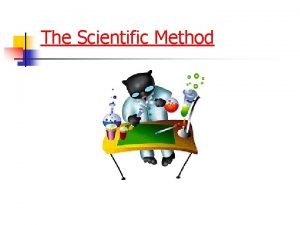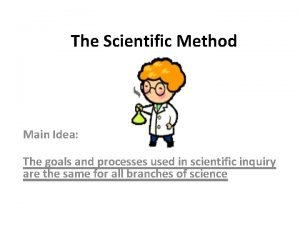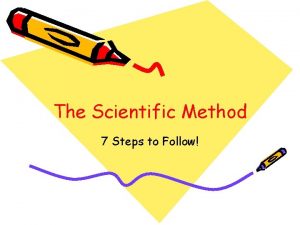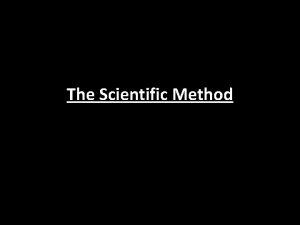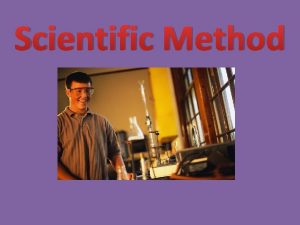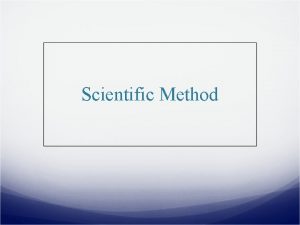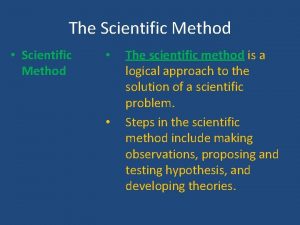Topic Scientific Method EQ How do Scientists perform









- Slides: 9

Topic: Scientific Method EQ: How do Scientists perform their research/work?

What is the scientific method? n It is a simple method scientists use to conduct an investigation. n It is a way to ask & answer scientific questions by first asking questions & conducting experiments. n THE ORDER OF THE STEPS DEPENDS ON THE QUESTION ASKED!

I. Question/Problem n Ask a question about something observed. – Why? – How? – What? n Question to be solved. n Must be about something measurable.

II. Hypothesis n Educated guess about how things work. n Prediction n Use If, then statements – If ____ [I do this], then _____ [this will happen] n Focus on one variable only.

III. Experiment n Tests your hypothesis. n Is it accepted (right) or rejected (wrong) ? n Change only one variable at a time. n Use a control or control group (A group that has nothing done to it. Standard used for comparison in an experiment. ) n In order for results to be valid, conduct several tests.

IV. Collect & Analyze Data n Record your data in a data table. – Numerical (quantitative) data organized in rows and columns – The variables are listed – The number of trials are listed – Blanks are left for the data (dependent variable) to be filled in

IV. Collect & Analyze Data Title: Describing the Data Trial 1 2 3 4 5 6 AVERAGE Variable 1 Variable 2 Variable 3

IV. Collect & Analyze Data n Graph – Graph the data to look for trends & relationships.

V. Conclusion Summary of your experiment. n After your experiment, review the data, and explain if the hypothesis was accepted or rejected. n If hypothesis is rejected, give possible reasons for the difference between your hypothesis and the experimental results. n
 Information gathered during an experiment
Information gathered during an experiment Specific topic examples
Specific topic examples Narrow topic examples
Narrow topic examples How is a scientific law different from a scientific theory?
How is a scientific law different from a scientific theory? Symposium advantages and disadvantages
Symposium advantages and disadvantages 7 steps of the scientific method
7 steps of the scientific method 7 steps of the scientific method
7 steps of the scientific method Scientific method goal
Scientific method goal Brainpop independent and dependent variables
Brainpop independent and dependent variables 7 step of scientific method
7 step of scientific method





